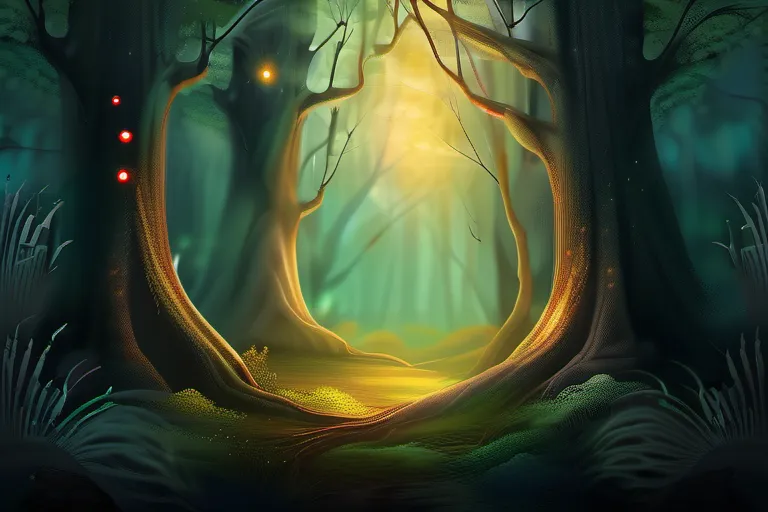Exploring the fundamental role and impact of animism on religious beliefs and practices.
Animism, a belief system that attributes consciousness, intention, and agency to natural objects and phenomena, has played a significant role in human history. This article delves into the importance of animism in religion, its evolution, and its influence on various cultures around the world.
The Origins of Animism
How did it all begin? The origins of animism are shrouded in the mists of time, offering us a glimpse into the earliest forms of human spiritual understanding. Imagine, if you will, our ancient ancestors standing beneath vast skies or by the flickering light of campfires, pondering the mysteries that surrounded them. They noticed the trees swaying, the streams flowing, and the animals moving about their daily lives—how could these inanimate objects be silent while the world around them was so full of movement and change?
Animism, in its essence, is the belief that everything in nature has a spirit or soul. This fundamental concept was not a leap into abstraction but rather a profound observation of the world. Was it merely a way to make sense of their environment, or did it serve as a guide for their daily living?
The idea that stones could speak, trees hold memories, and rivers carry spirits is both humbling and awe-inspiring. It’s as if the very landscape around us was imbued with stories and significance, inviting humans to participate in the life of the world beyond just physical existence.
Imagine a time when every rock or river held not just a place but a spirit—one that could influence human lives for better or worse. How did this belief shape their daily rituals? How did they communicate with these spirits?
The roots of animism go deep, intertwining with the fabric of early human societies. From ancient Egypt’s worship of Anubis, the god of mummification and the afterlife, to the Native American practice of respecting every living creature as a relative—these practices reflect the enduring influence of animistic beliefs.
It was more than just a belief system; it was a way of life. Every aspect of daily existence—from farming to hunting, from healing to storytelling—was intertwined with these spiritual understandings. In many ways, animism was the glue that held communities together, providing both moral and practical guidance.
As we explore further into how animism has manifested in different cultures throughout history, it becomes clear just how deeply rooted this belief system is in human consciousness. From the whispers of ancient forests to the bustling urban landscapes today, there are still echoes of those early spirits that guided our ancestors.
Animism in Different Cultures
Imagine stepping into an ancient forest, where every tree whispers stories and every stone holds secrets. How did such a belief system animism, which sees everything as imbued with spirits, shape the religions of different cultures? From the Amazonian rainforests to the craggy mountains of Europe, animism has left an indelible mark on how people perceive their world and place within it.
Consider the Aztec civilization, where every aspect of nature was personified into a deity. The jaguar represented strength and courage, while the eagle symbolized freedom and vision. These animals were not just symbols; they were spiritual guides and protectors. How did such a belief influence their daily lives? Were decisions about hunting or agriculture made with an eye on these spirit guides?
Look at Pantheistic traditions in India, where every river, tree, and mountain has a divine essence. The Ganges River is more than just water; it is the goddess Gaia herself. People bathe in its waters, believing they can wash away their sins. How does this belief impact the environmental practices of those who follow such traditions?
In African societies, animism often manifests through ancestor veneration and the belief that spirits live on even after death. Ancestors are seen as guides and protectors, with offerings and rituals performed to maintain a healthy relationship between the living and the dead. How does this complex interplay of beliefs shape the social fabric and moral codes in these communities?
As we journey through different cultures, animism appears like a thread woven throughout the tapestry of human spirituality. It is not just about seeing life but living it. Whether it’s finding balance with nature or connecting with the divine through natural elements, animism offers a profound and intimate way to engage with the world around us.
Each culture has its unique flavor and interpretation of these beliefs, yet they all share a common thread—seeing the sacred in the everyday. How does this perspective compare with your own understanding of spirituality? Do you see yourself as part of a larger cosmic web or do you believe in a more detached, impersonal divine force?
The Evolution of Animism
The evolution of animism has been like watching a seed grow into a mighty tree, transforming over millennia from simple beliefs to complex religious systems. How did this transformation occur? Was it a gradual process, or did significant events spur its growth? Let’s delve into the historical journey of animism and explore how it developed into more intricate belief systems.
Initially, animism was seen as a child of nature, where every object, plant, and animal possessed a soul. This view was intuitive and deeply rooted in the daily lives of early human societies. But why did humans start attributing souls to non-living things? Was it out of fear or a deeper understanding of the interconnectedness of life?
As human communities grew more complex, so too did their spiritual beliefs. The transition from animism to more structured religions can be likened to the metamorphosis of a caterpillar into a butterfly. This transformation was marked by the emergence of deities and religious leaders who could guide and provide answers to the increasing complexities of life.
Consider ancient civilizations such as those in Mesopotamia or Egypt, where animistic beliefs began to evolve. Initially, each object might have had its spirit, but over time, these spirits were personified into gods with distinct domains. This shift was not just about adding more deities; it was a move towards a more organized and hierarchical system of belief.
Another key factor in this evolution was the rise of agricultural societies. As humans became more settled, their relationship with nature changed. The cycles of planting and harvesting led to a deeper understanding of natural rhythms, which were then personified into seasonal gods and goddesses. This not only enriched religious practices but also integrated them more deeply into daily life.
The transformation of animism was also influenced by the need for social order. As communities grew larger, collective rituals and shared beliefs became crucial to maintain harmony. The introduction of priests and priestesses played a significant role in this transition, as they acted as intermediaries between humans and the divine.
Ultimately, the evolution of animism into more complex religious systems was a journey from the simple yet profound understanding that all things are alive, to the intricate web of beliefs that govern our interactions with the world. This transformation is not just a historical fact but a reflection of human desire to make sense of the world and find meaning in its complexities.
Animism and Religious Syncretism
How does one religion blend seamlessly into another, creating something entirely new and profound? The answer might lie in animism, a belief system where spirits are associated with natural objects, places, and phenomena. Animism has been a foundational element in many religious traditions, often intertwining with other beliefs to form unique practices and traditions.
Consider the example of Vodou in Haiti. This religion is a vibrant mix of African animist beliefs and Catholicism, brought together during the era of colonial slavery. How did these disparate belief systems merge? It was through a complex process of syncretism where Vodou spirits, or loa, were equated with saints, allowing practitioners to retain their spiritual practices while adapting to new cultural environments.
Similarly, in Brazil, Candomblé emerged as a blend of West African animist beliefs and Catholicism. The practice of offering gifts to nature spirits, or orixás, is a central feature that has been seamlessly integrated with the veneration of saints, creating a rich tapestry of rituals and practices.
Is it not fascinating how these blended traditions have managed to preserve the essence of their original animist roots while adapting to new contexts? These religious syncretisms demonstrate the resilience and flexibility of animism in shaping modern spiritual landscapes. They show that even as religions evolve, the fundamental idea of spirits or souls associated with natural elements remains a powerful force.
Through such examples, we see how animism has not only survived but thrived by adapting to new cultural environments. It serves as a reminder that religious practices are dynamic and can transform without losing their core beliefs. This flexibility makes it an essential component in understanding the diversity of human spirituality today.
The Role of Animism in Modern Spirituality
The Role of Animism in Modern Spirituality: Analyze the contemporary relevance of animism in modern spirituality and its potential for future growth.
Is it possible that our connection to nature, once so intrinsic in ancient cultures, has become merely a memory? Or is there still a way to reignite this connection through the principles of animism? In today’s fast-paced world, where technology often overshadows natural wonders, can we rediscover the profound significance of animism in our modern spiritual lives?
Imagine stepping into a forest, not just as a visitor but as part of an intricate web of life. Each tree, each stream, and even the wind are seen as living beings with their own spirits. This perspective transforms nature from a mere backdrop to a sacred space where every entity has its role in the grand scheme of things. How might this shift impact our daily lives, our decisions, and our interactions with the environment?
Consider the idea that animism isn’t just about worshipping natural elements; it’s about recognizing their inherent value and respecting them as integral parts of a larger community. In a world grappling with environmental degradation and climate change, could this ancient wisdom provide us with new insights on how to coexist harmoniously with nature? Might embracing animism help us cultivate a deeper sense of responsibility towards the planet?
The practice of animism encourages a holistic view where every aspect of life is interconnected. By fostering such an outlook, we can potentially alleviate some of the stresses and alienation that modern living often brings. Can these ancient beliefs offer us tools to navigate today’s complex issues with more resilience and empathy? As we continue to evolve, might animism play a crucial role in shaping our future spiritual practices?
In conclusion, exploring the significance of animism in modern spirituality is not just about resurrecting old traditions but about finding new ways to live in harmony with nature. Could this approach be key to addressing some of today’s most pressing challenges? The journey ahead beckons us to rekindle our relationship with the natural world and discover the transformative power of animism.
Animism and Environmentalism
Imagine a world where every tree whispers secrets, every stream holds memories, and every stone carries its own soul. In this realm, nature isn’t just a backdrop; it’s a living, breathing entity woven into the fabric of life itself. This is the heart of animism, a belief system that sees everything in the natural world as alive and imbued with spirit. As we explore the connection between animism and environmentalism, we must ask ourselves: How can understanding this ancient practice help us navigate the pressing issue of preserving our planet?
The relationship between animism and environmental consciousness is profound and symbiotic. Just as animists see a tree as more than just a source of wood or shelter, modern environmentalists must reevaluate their approach to nature. By embracing an animist perspective, we can foster a deeper respect for the environment, recognizing that every element of our natural world has intrinsic value and deserves protection.
Consider the traditional practice of sacred groves—areas set aside as sanctuaries where trees are not cut or disturbed. These groves embody the animist belief in nature’s sanctity. Today, we can learn from these ancient practices by creating protected natural reserves and advocating for sustainable living that respects the spiritual connection to the land.
Moreover, animism teaches us about the interconnectedness of all life forms. The metaphor of a tree providing shelter to countless creatures highlights how every action in nature ripples through the web of existence. This can inspire contemporary environmentalists to consider the broader impacts of their choices, encouraging more holistic and sustainable practices.
As we move forward, let us not only protect our environment but also honor its spirits and the wisdom they hold. By adopting an animist mindset, we might find new ways to coexist harmoniously with nature, ensuring that future generations inherit a world as vibrant and alive as it is today. After all, isn’t our planet’s survival tied to the very essence of life itself?
Conclusion
 By understanding the significance of animism in religion, we gain valuable insights into the origins of religious beliefs and practices. This knowledge can help us appreciate the diversity of human spirituality and foster a greater sense of unity and respect for all belief systems.
By understanding the significance of animism in religion, we gain valuable insights into the origins of religious beliefs and practices. This knowledge can help us appreciate the diversity of human spirituality and foster a greater sense of unity and respect for all belief systems.











